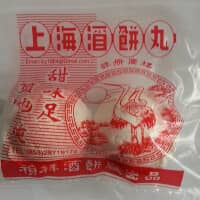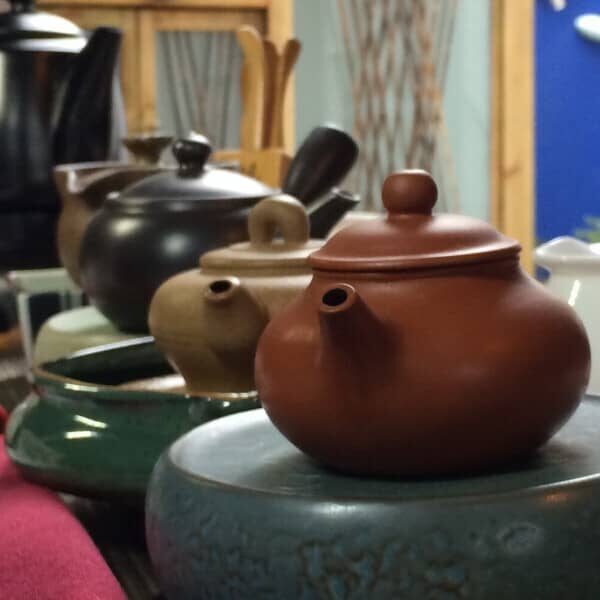Autumn Harvest
In autumn time, all is slower & heat is receding.
We gather in our resources & energy to keep healthy, strong and resilient
Early Autumn
In early autumn, the ground has accumulated a large amount of heat. As cool winds come from the north, the rising heat turns to dry warm wind. The earth’s Yang energy gradually transforms into cool Yin energy. Your task in this period is to begin to reduce your body’s excess internal heat, maintain your fluid levels and pay attention to nourishing and strengthening your lungs. Recommended tea: Lishan Oolong.
Late Autumn
Now, when cool winds come from the north, they foster a cool, dry climate. You will need to counteract the coolness with nourishing, warming Yang foods and beverages, and oppose the dryness by keeping your skin and your insides hydrated. There is greater difference in temperature between day and night, so you must guard against catching colds by strengthening lung function and improving the body’s defensive Qi and pectoral Qi in particular. Recommended tea: San Hua Three Flower Tisane (Warming Yang recipe).
Taking Care In Autumn
Your Yang energy (Qi) changes to Yin around 11pm when it is time to rest, and switches back to Yang at around 11am. Managing these shifts with awareness helps you move through the seasons in as healthy a state as possible. In autumn especially, go to bed early (which helps retention of Yang Qi) and get up early (which allows the lung Qi to expand and sets the mind at ease).
Sour tasting foods retain the Qi energy in the lungs whereas spicy foods dispel it. So as a general rule, in the autumn, you should go for sour in preference to spicy foods.
Read more about the five-element theory in traditional Chinese medicine and achieving your Yin and Yang balance
RICE WINE
2 Shanghai brewer’s biscuits
500ml water, boiled then allowed to cool
- Wash and soak the rice over night.
- Next day, steam the rice over a large muslin cloth till cooked and soft.
- Carefully add the 500ml water into the rice, place the whole in a very clean urn and leave to cool further.
- Crush the brewer’s yeast biscuits over the rice and press down on the rice.
- Create a little ‘well’ in the middle of the rice, cover the urn with clingfilm and put the urn’s lid on tightly.
- Allow it to work its magic in 2-3 days in a warm place like an airing cupboard. The fermentation process needs to be allowed to occur uninterrupted, so resist any temptation to open the urn to check on progress. A yoghurt maker or an instant pot with yoghurt making function would be perfect for this mixture at a constant 30°C .
- When the precious wine liquid can be seen gathering in the ‘well’ is when your rice wine is ready.
- Finally, keep the resulting home-made wine in the fridge, for drinking later or for use in cooking.
“Shanghai Brewer’s Biscuits”

CHICKEN, TOFU AND EGGPLANT HOTPOT
450g chicken breast or thigh (skin on)
1 tsp fish sauce
1 box soft tofu
2 garlic cloves, chopped
3 salted duck eggs, boiled
2 tsp cooking oil
1 tbsp dark soy sauce
300ml chicken stock
1 tsp corn starch dissolved in 3 tsp water
1 spring onion, sliced
- Dice the chicken and marinate in a splash of soy sauce, Chinese rice wine, cornstarch and white pepper.
- Remove the duck egg yolk and roughly chop the egg white.
- Dice the aubergines into cubes.
- In a hot wok or frying pan, add 1 tsp cooking oil till smoking hot and fry the aubergine.
- Add the garlic and fry.
- Add a teaspoon or two of water to help cook the aubergine.
- When the aubergine is soft and cooked, remove from wok and set aside.
- In the same wok, add the remaining oil and fry the chicken pieces till light golden brown.
- Add the egg white and yolk and the fish sauce and fry with the chicken till fragrant.
- In a clay pot, add the tofu, aubergine, chicken cubes, chicken stock and all the rest of seasonings.
- Bring to a boil for 5 minutes.
- Add the cornstarch water to thicken the sauce.
- Serve hot, topped with some sliced spring onions and a drizzle of glutinous rice wine.
DAIKON AND GREEN TEA BROTH
3g Miya Sencha green tea leaves
200ml water (for brewing the tea)
salt to taste
- Add the mooli into a pot and add just barely enough water to cover.
- Bring to a boil and cook till soft.
- Season with salt.
- Separately, brew the green tea.
- Pour the tea on to the mooli to make this interesting and nutritious soup.
FRAGRANT TEA STEAM FOR LUNGS
- Choose a fragrant tea, if you can, like Lishan Oolong, or an mellow aromatic one like Emperor Pu Erh 1998 Vintage.
- Add freshly boiled water to 2 or 3 grams of tea leaves in a small cereal bowl.
- Position your face over the bowl and let yourself breathe in the steam.
- Use your hands on the edge of the bowl to keep too much steam from escaping.
- Enjoy this experience for 10 minutes, then you can sit up and drink the tea!
- Don’t forget, with a good quality tea, you can keep adding more hot water and brew the tea again and again.
WARM EXTREMITIES
- Fill a muslin bag, no bigger then the palm of your hand, with some unrefined rock salt.
- Warm the bag in a microwave.
- Lie down on your front comfortably and place the warm muslin bag on your ‘Da Zui’ (大椎) acupuncture point. This acupuncture point is the slightly protuberant vertebra just below the back of the neck.
- Do this as often as you can, ideally every day.
- You can also aim the hot water flow at the same acupuncture point when you’re in the shower.
FOOT SOAK BEFORE BEDTIME
- Soak your feet in a barely warm water.
- Then do is very gradually add hotter water.
- When the first drop of perspiration appears on the tip of your nose, drain away the hot water and massage your feet dry.
- Then lie in bed with the soles of your feet facing each other.
- Do this in as relaxed a way as you can, staying in that position for about 10 minutes.
- This will allow your Qi energy to flow more freely via the acupuncture point that affects the kidneys.
- After that, let yourself enjoy a night of blissful rest.
RELIEF FOR DRY COUGH
- The ‘Tai Yuan’ acupuncture point is located on the underside of the wrist, below the thumb.
- Gently massage it 10 times in a clockwise direction.
- Then massage it 10 times anti-clockwise.
- Do this three times.
- Repeat daily or whenever you can.









